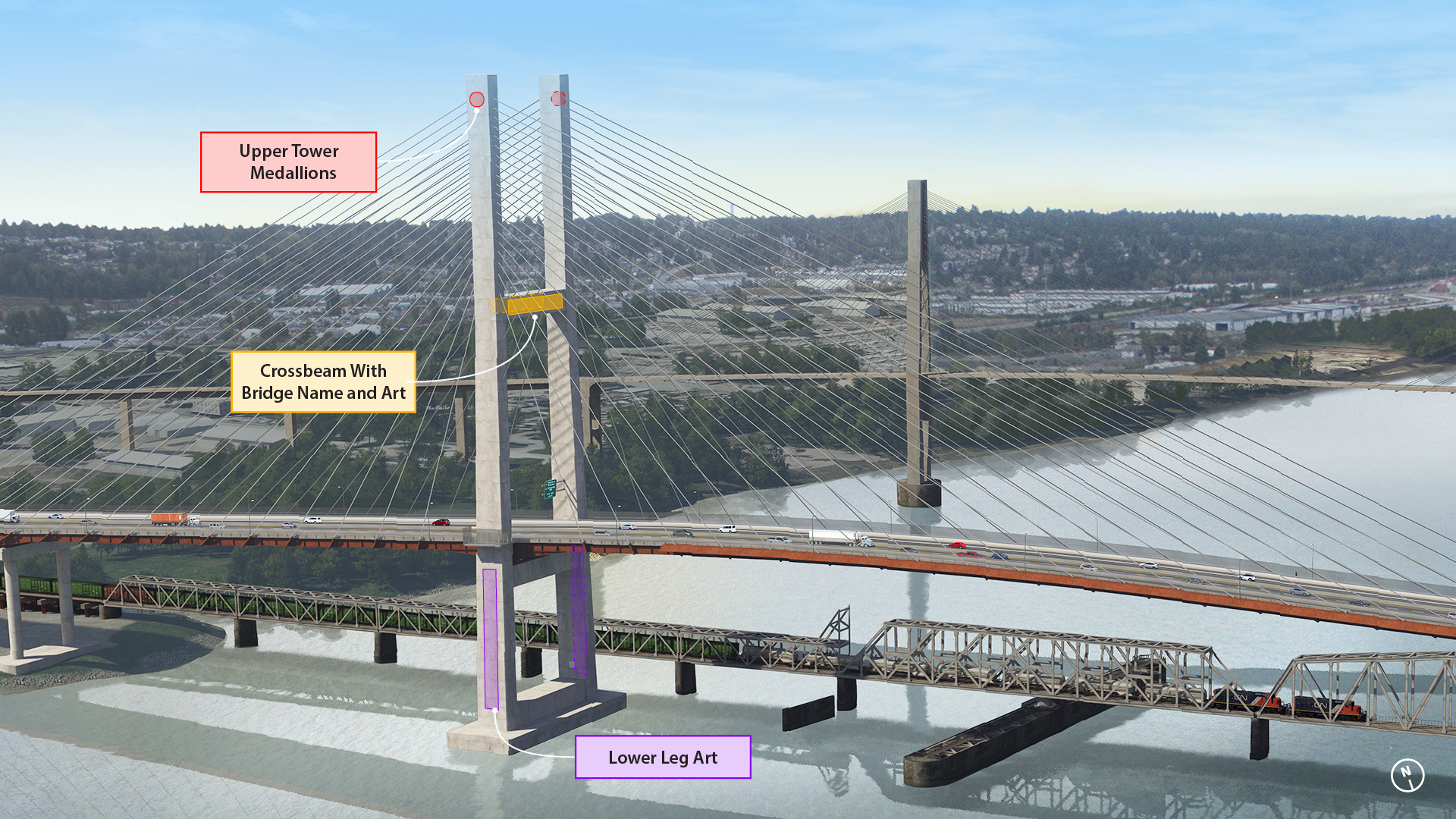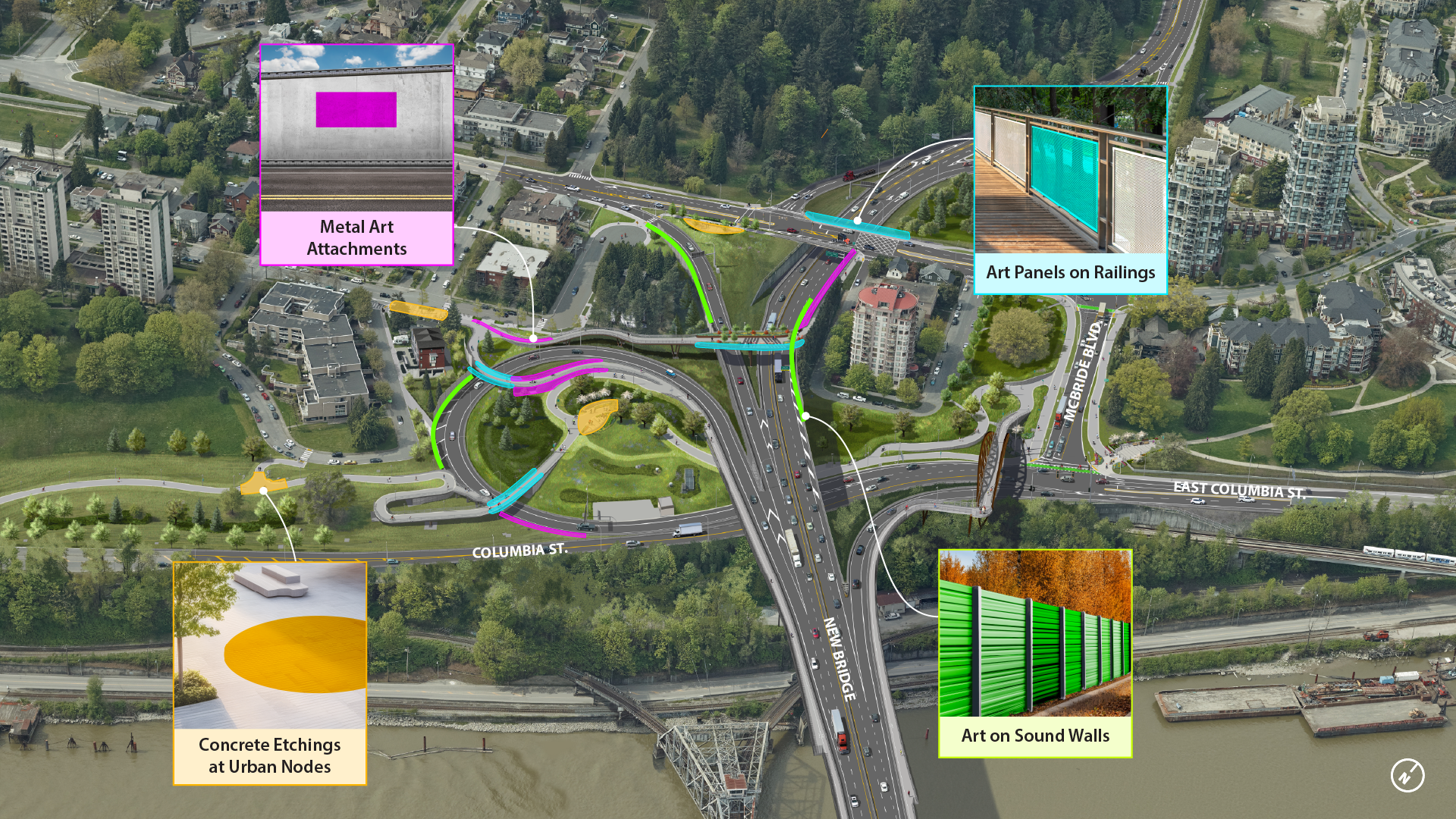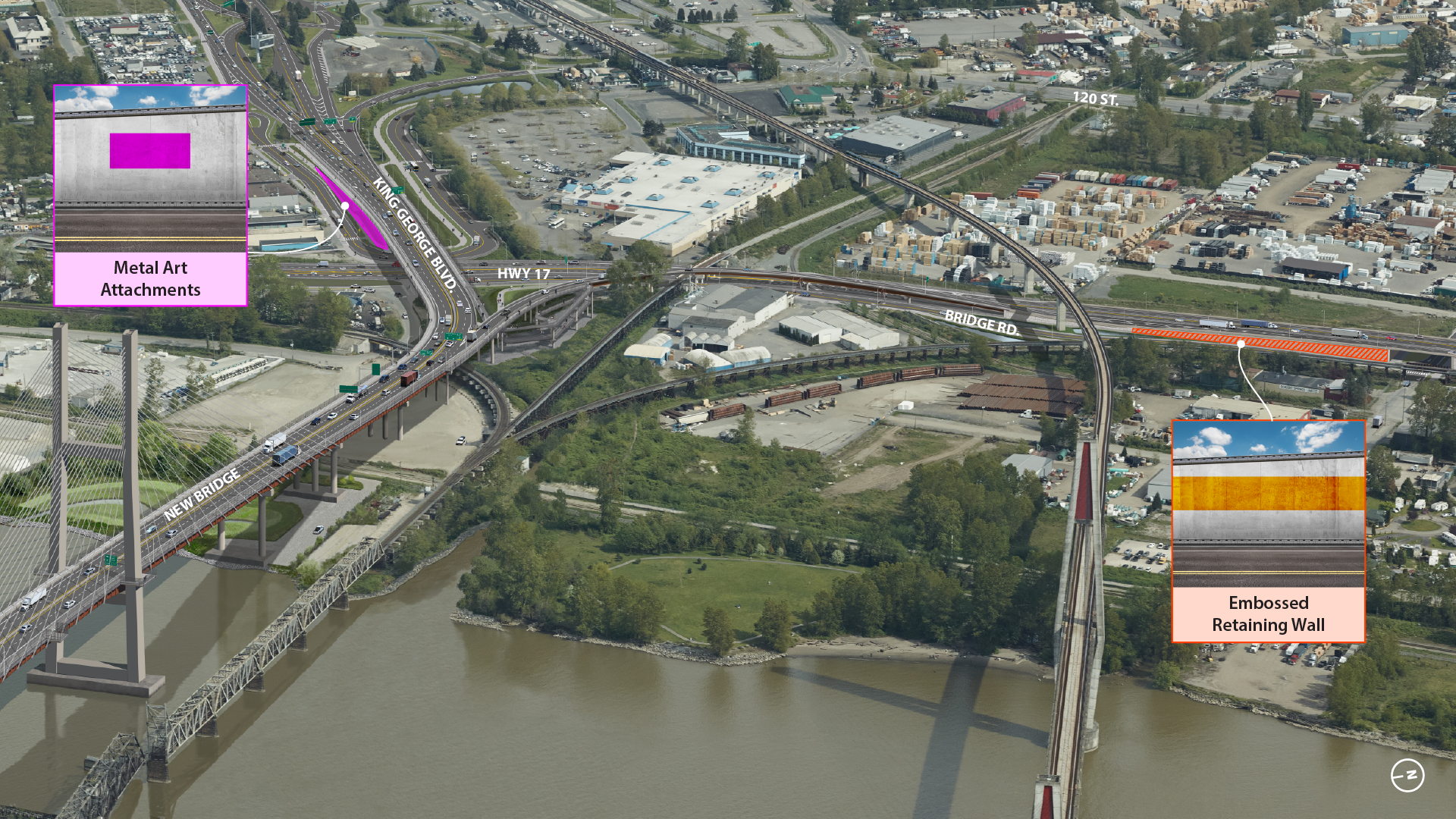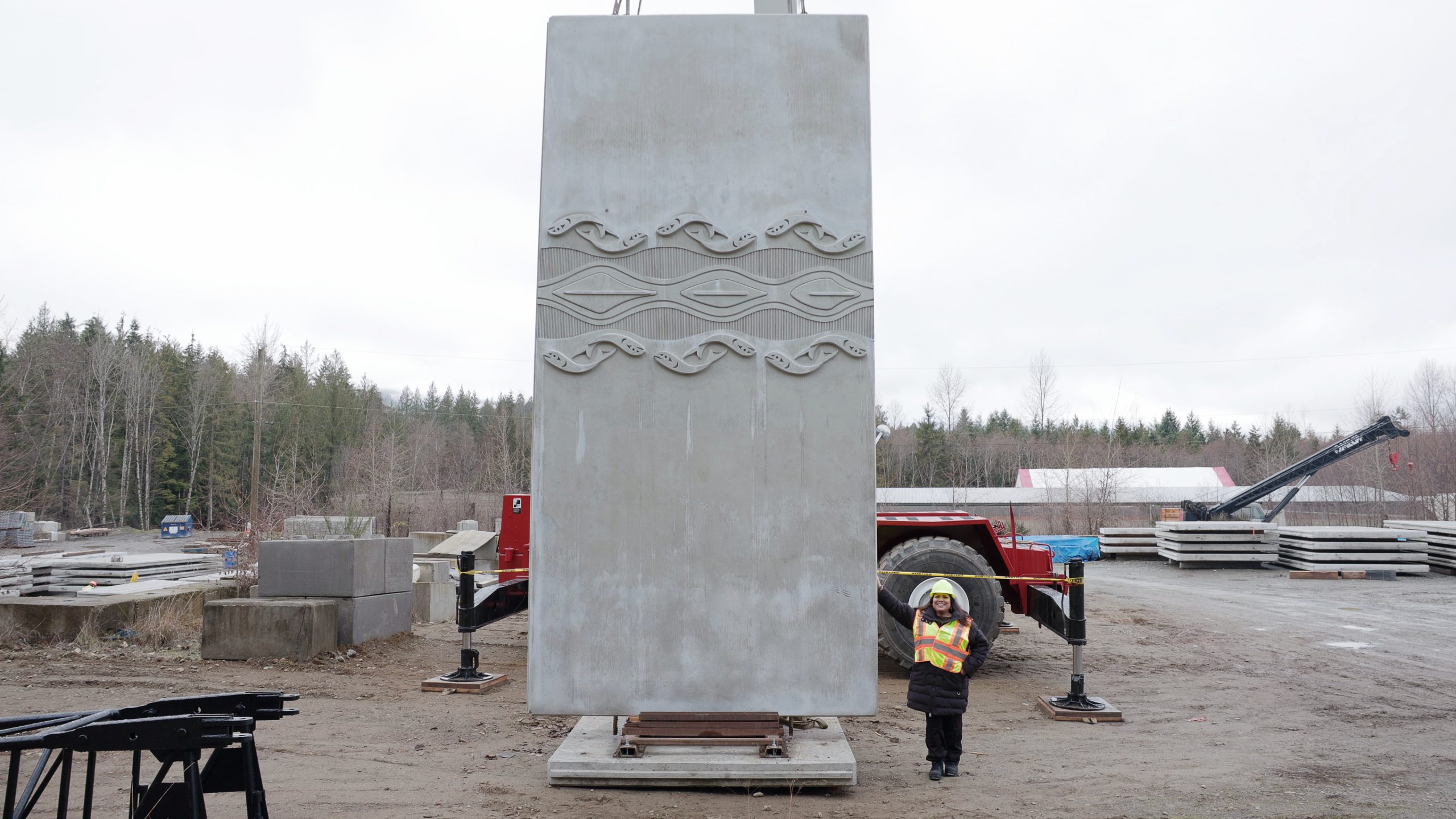First Nations Cultural Recognition Program
To recognize the deep historical and current connections of First Nations to the Pattullo Bridge Replacement Project area, First Nations artwork is being integrated into Project elements both on and off the new bridge.
The project overlaps with the boundaries of two former reserves: Musqueam Indian Reserve No. 1 and Kwantlen Indian Reserve No. 8. Both were located in qiqéyt, an important village site for First Nations within the project area.
A First Nations cultural recognition program is using artwork, storytelling, language, and signage as an opportunity for education, acknowledgment, and celebration of the culture, history, and continued stewardship of the Project area’s lands and waters.
As part of the cultural recognition program, Musqueam Indian Band and Kwantlen First Nation are bestowing the people of British Columbia a name for the new bridge in the hən̓q̓əmin̓əm̓ language. More details about the name will be shared in the coming months.
In the coming months, artwork will be installed on the lower piers, upper tower and crossbeam of the new bridge.
First Nations artists are exploring themes of kinship-based trade, transportation, and intergenerational connection through their artwork. These themes will feature strongly in artwork visible on the new bridge structure and approaches in New Westminster and Surrey.
Artworks on the theme of the traditional and contemporary practices of weaving blankets and basketry will be installed on noise walls, retaining walls and in concrete etchings at urban nodes in New Westminster and on a retaining wall on the Surrey side of the Project. These artworks will reflect the threads of kinship that have woven First Nations communities together since time immemorial.
Stay tuned — as artwork is installed, this page will be updated with more information about each art piece and artist!
Art Locations
On-bridge Art

Upper Tower Medallions – Two metal art attachment medallions installed near the top of each bridge tower leg
Crossbeam Art – Bridge name and art installed on the south and north facing sides of the bridge tower’s upper crossbeam
Lower Leg Art – Artwork embossed onto concrete panels installed on each of the bridge tower’s lower legs
Art in New Westminster

Metal Art Attachments – Stainless steel or aluminum art attachments affixed to the faces of concrete retaining walls
Art Panels on Railings – Art panels fabricated and/or laser cut and welded onto galvanized steel panels installed on the railings of pedestrian bridges
Art on Sound Walls – Printed artwork applied to the faces of aluminum walls that reduce traffic noise
Concrete Etchings at Urban Nodes – Art etched into the concrete surface of pedestrian hubs along multi-use pathways
Art in Surrey

Metal Art Attachments – Stainless steel or aluminum art attachments affixed to the faces of concrete retaining walls
Embossed Retaining Wall – Artwork embossed into the concrete retaining wall along a face of the concrete retaining wall along the bridge approach
Artist Profile: q̓ʷɑt̓icɑ (Phyllis Atkins)
q̓ʷɑt̓icɑ, Phyllis Atkins, is a Kwantlen First Nation artist who learned how to paint with Barbara Boldt in Fort Langley and studied with her for many years until she opened her own Spring Salmon Studio in 2012. q̓ʷɑt̓icɑ is influenced by the deep connection to her ancestors, the community and her family, but most of all she is inspired by her husband Drew Atkins.
q̓ʷɑt̓icɑ’s artwork is embossed into the concrete retaining wall along the northeast side of the Hwy 17/Old Yale Road overpass, visible to people traveling under the new overpass in Surrey.
Artist Inspiration: Sturgeon and Eulachon
The work of Kwantlen artist q̓ʷɑt̓ic̓ɑ, Phyllis Atkins, is inspired by her lifelong connection to the stɑl’əw̓ (Fraser River). The artwork is dedicated to her friend, Garrett Martindale, Sts’ailes First Nation, who worked with q̓ʷɑt̓ic̓ɑ on white sturgeon acoustic telemetry studies.

The white sturgeon is the largest freshwater fish in the world, and can be found in the lower Fraser River. Sturgeon have five rows of sharp bony, diamond shaped scutes along the length of their body. Scutes are modified scales that act as armour. This trait separates them from other fish.
Eulachon are small oily silver coloured fish from the smelt family. In 2011 the Fraser Valley Eulachon population was deemed endangered.
“The sturgeon scutes are the main inspiration for my design concept. The sturgeon scutes came from a female sturgeon that died, with the row still in her belly, found just upstream of q̓ʷɑ:nƛ̓ən . It was thought to be approximately 75 years old or more…My design resembles a Salish wool weaving and the back of a sturgeon with the male and female eulachon intertwining like the Salish wool, cedar and bulrush twining weave.“
– q̓ʷɑt̓icɑ, Phyllis Atkins


